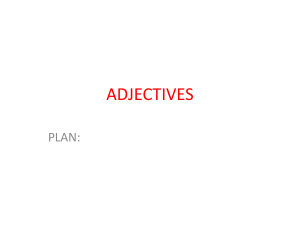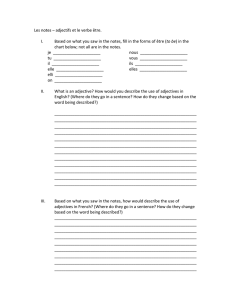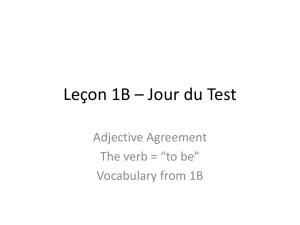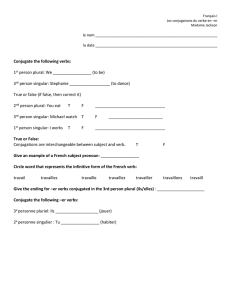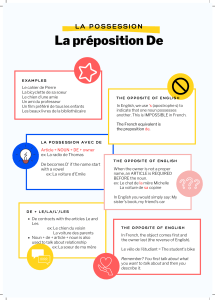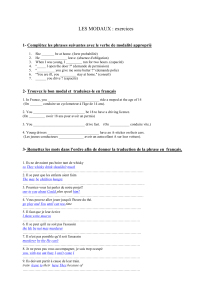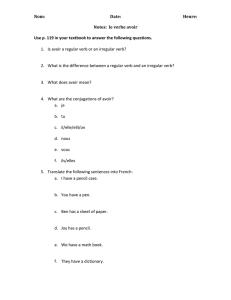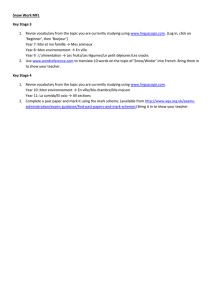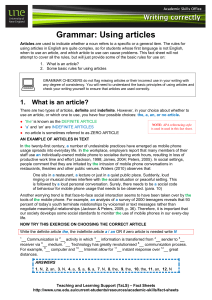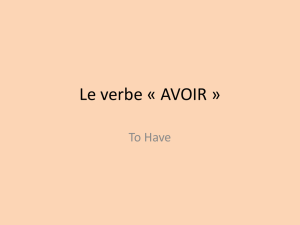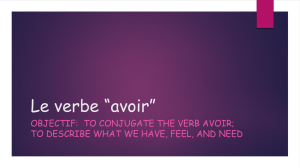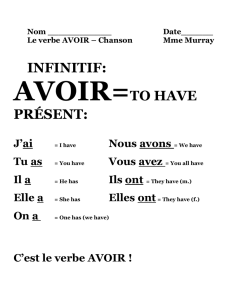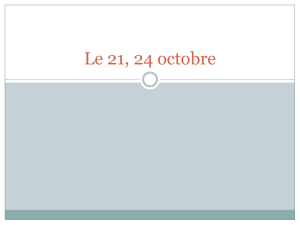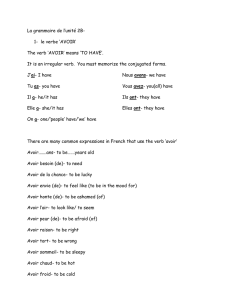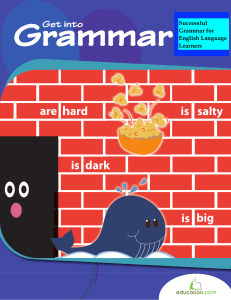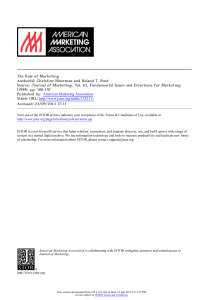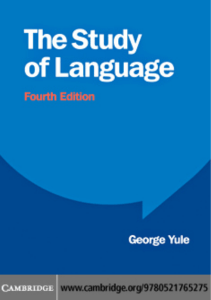Le verbe `AVOIR` – to have (review)
publicité
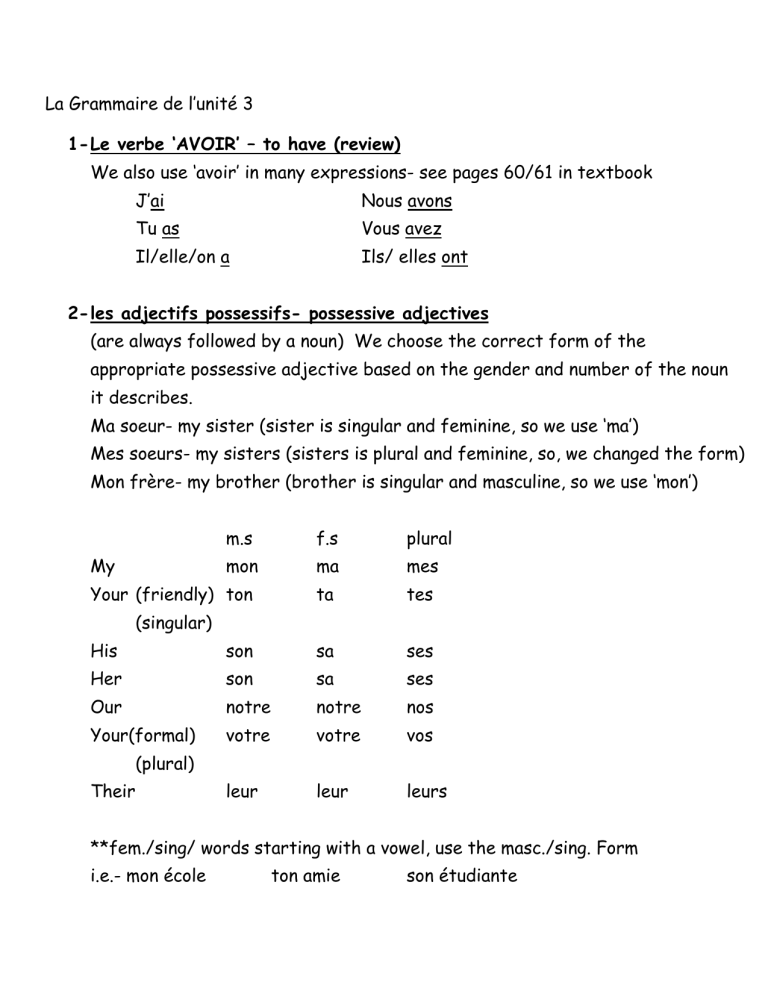
La Grammaire de l’unité 3 1- Le verbe ‘AVOIR’ – to have (review) We also use ‘avoir’ in many expressions- see pages 60/61 in textbook J’ai Nous avons Tu as Vous avez Il/elle/on a Ils/ elles ont 2- les adjectifs possessifs- possessive adjectives (are always followed by a noun) We choose the correct form of the appropriate possessive adjective based on the gender and number of the noun it describes. Ma soeur- my sister (sister is singular and feminine, so we use ‘ma’) Mes soeurs- my sisters (sisters is plural and feminine, so, we changed the form) Mon frère- my brother (brother is singular and masculine, so we use ‘mon’) My m.s f.s plural mon ma mes ta tes Your (friendly) ton (singular) His son sa ses Her son sa ses Our notre notre nos Your(formal) votre votre vos leur leur leurs (plural) Their **fem./sing/ words starting with a vowel, use the masc./sing. Form i.e.- mon école ton amie son étudiante 3- BAGS adjectives Most adjectives in French follow the noun they describe. There are a few exceptions which we call ‘BAGS’ adjectives : Beauty, Age, Goodness, Size. These adjectives come BEFORE the noun they describe. The actual adjectives are: B- joli(e) -pretty beau(belle)- beautiful, good-looking A-jeune- young vieux(vieille)- old G-bon(bonne)- good mauvais(e)- bad S-petit(e)- small grand(e)- big nouveau(nouvelle)- new gros(se)- overweight long(ue)-long Une jolie fille Les grands livres Une jeune home Les bonnes étudiantes Of these adjectives, a few have weird forms. Instead of following the general rule: add ‘e’ to make feminine and ‘s’ to make plural, they do this: m.s. m.s.v. (masc./sing/vowel m.pl. f.s. f.pl. beau bel (homme) beaux belle belles nouveau nouvel (ordinateur) nouveaux nouvelle nouvelles vieux vieil (animal) vieux vieilles vieille
